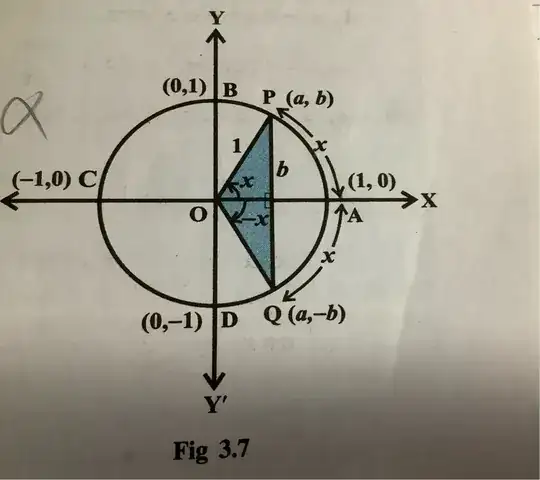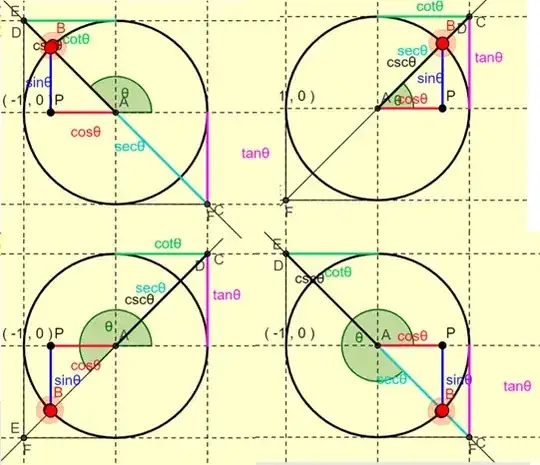This is the image my textbook uses for finding whether the ratios are +ve or -ve.
Here , i feel they mean to say that tan (+x) = tan x since b and a are +ve . We can tell it by looking at the x and y axis But I want to know if they talk about sin(+x) , how do we know if OP is +ve or not.
Can we also say that x = 1 since it is a radian measure of 1 unit.

